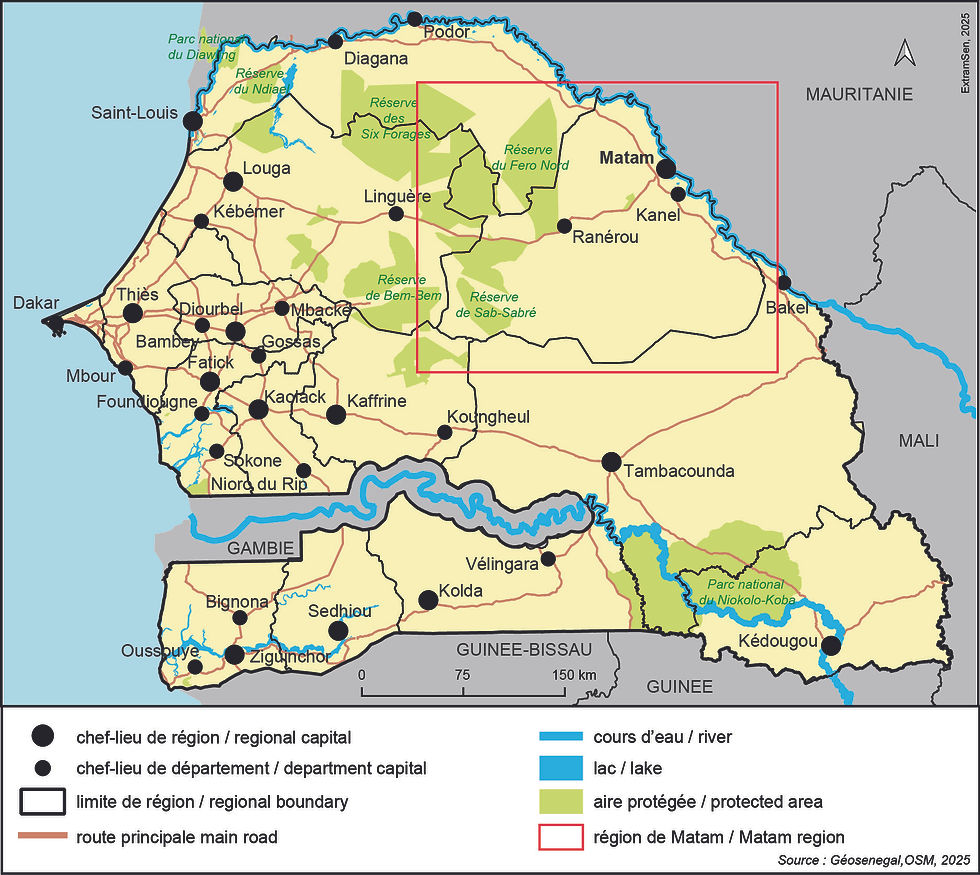Maps
Senegal
This map provides an overview of Senegal, highlighting regional boundaries, regional and departmental capitals, as well as major roads, rivers, lakes, and protected areas.
The Matam region, targeted by the SPRINT-Sen project, is outlined in red in the north-eastern part of the country, on the border with Mauritania. It includes key departments such as Matam, Kanel, and Ranérou. This Sahelian region, marked by extreme climatic conditions, is at the heart of the project's challenges related to health, climate resilience, and population vulnerability.The map also illustrates the distribution of protected areas at the national level, including nature reserves and national parks, highlighting the importance of environmental preservation in the context of sustainable development.
Matam region
This map shows the geographical location of the Matam region in north-eastern Senegal, on the border with Mauritania. The map highlights regional and departmental boundaries, regional, departmental and district capitals, as well as major roads and waterways.
The SPRINT-Sen project study area is outlined in red, centred around the towns of Matam, Ourossogui, and Thilogne, along the Senegal River.
Several protected areas (in green) are also shown, such as the Ferlo Nord, Kada, Barnaadj-Dodji, and Doli reserves, which demonstrate the ecological importance of the wider region.
SPRINT-Sen project study areas
This map shows the SPRINT-Sen project study area, located in the Matam region in north-eastern Senegal. The main towns identified are Gaol, Taïba, Matam and Ourossogui, located along the Senegal River. The map consists of two parts: :
-
on the left, a cartographic representation showing main and secondary roads, administrative boundaries, waterways, lakes and wooded areas; ;
-
on the right, a satellite image providing a more realistic view of the landscape and vegetation.
This map serves as a reference for surveys and field activities carried out as part of the project, which focuses on the interactions between climate, health and system resilience in this area.

.jpg)
.jpg)
.jpg)